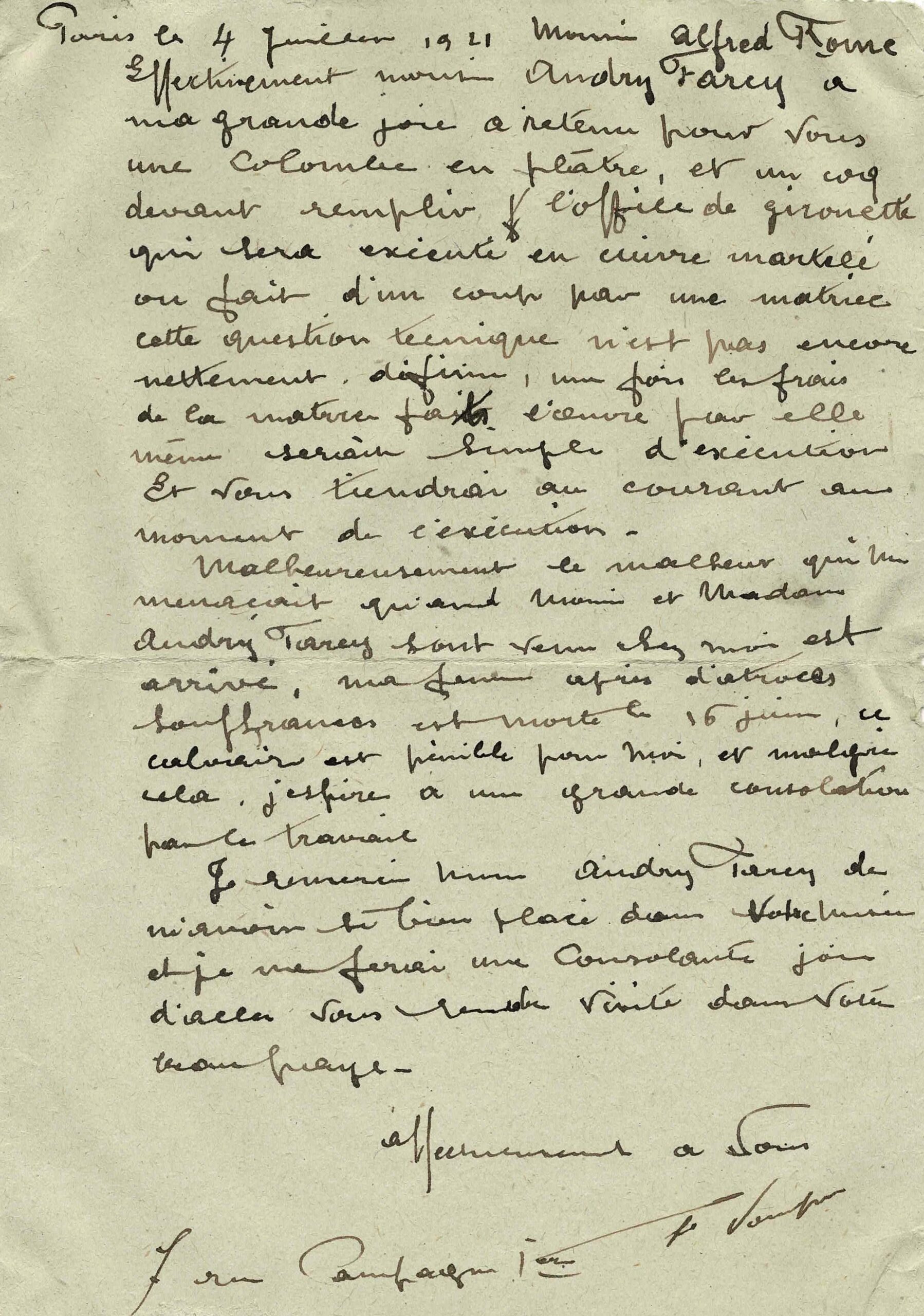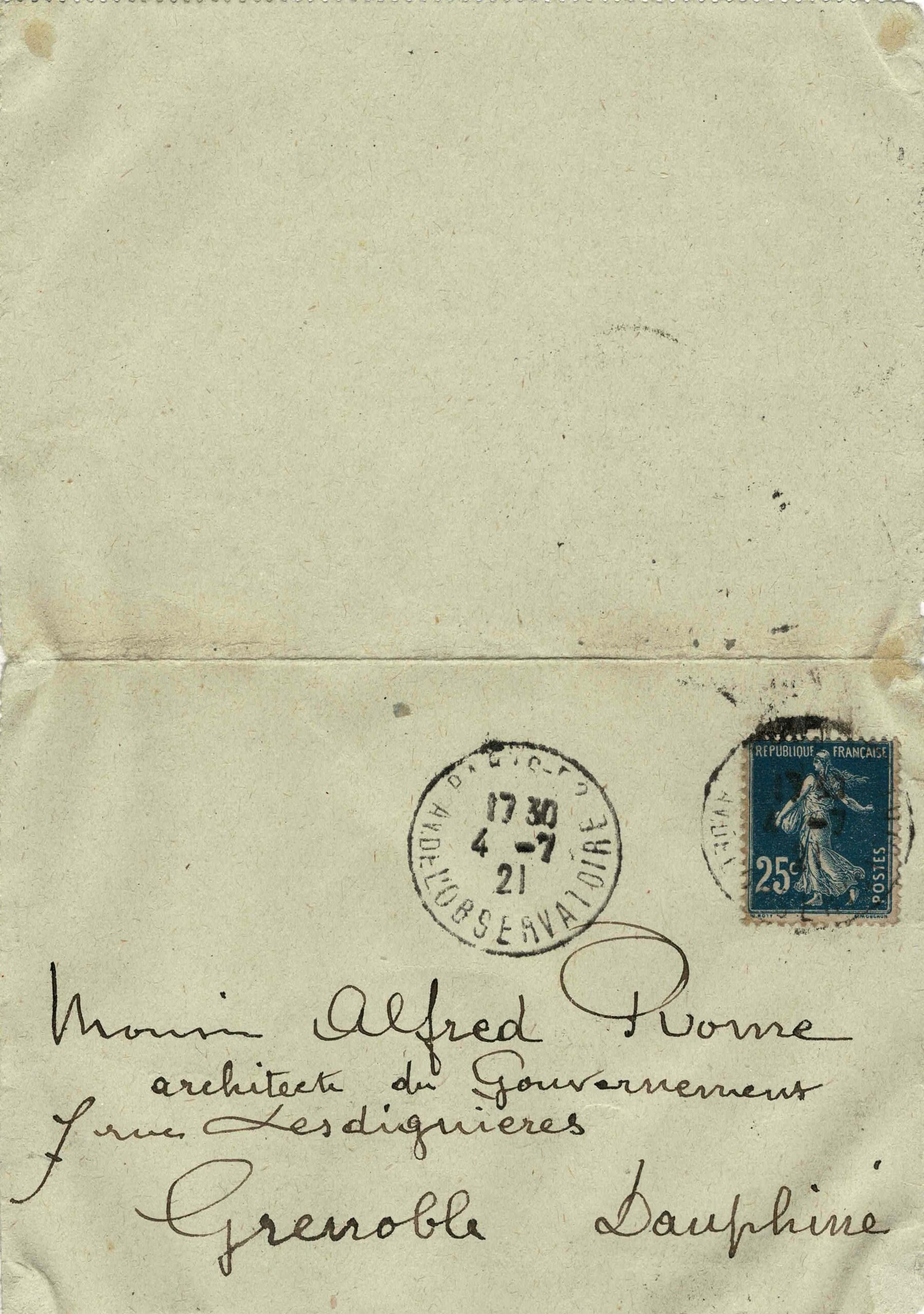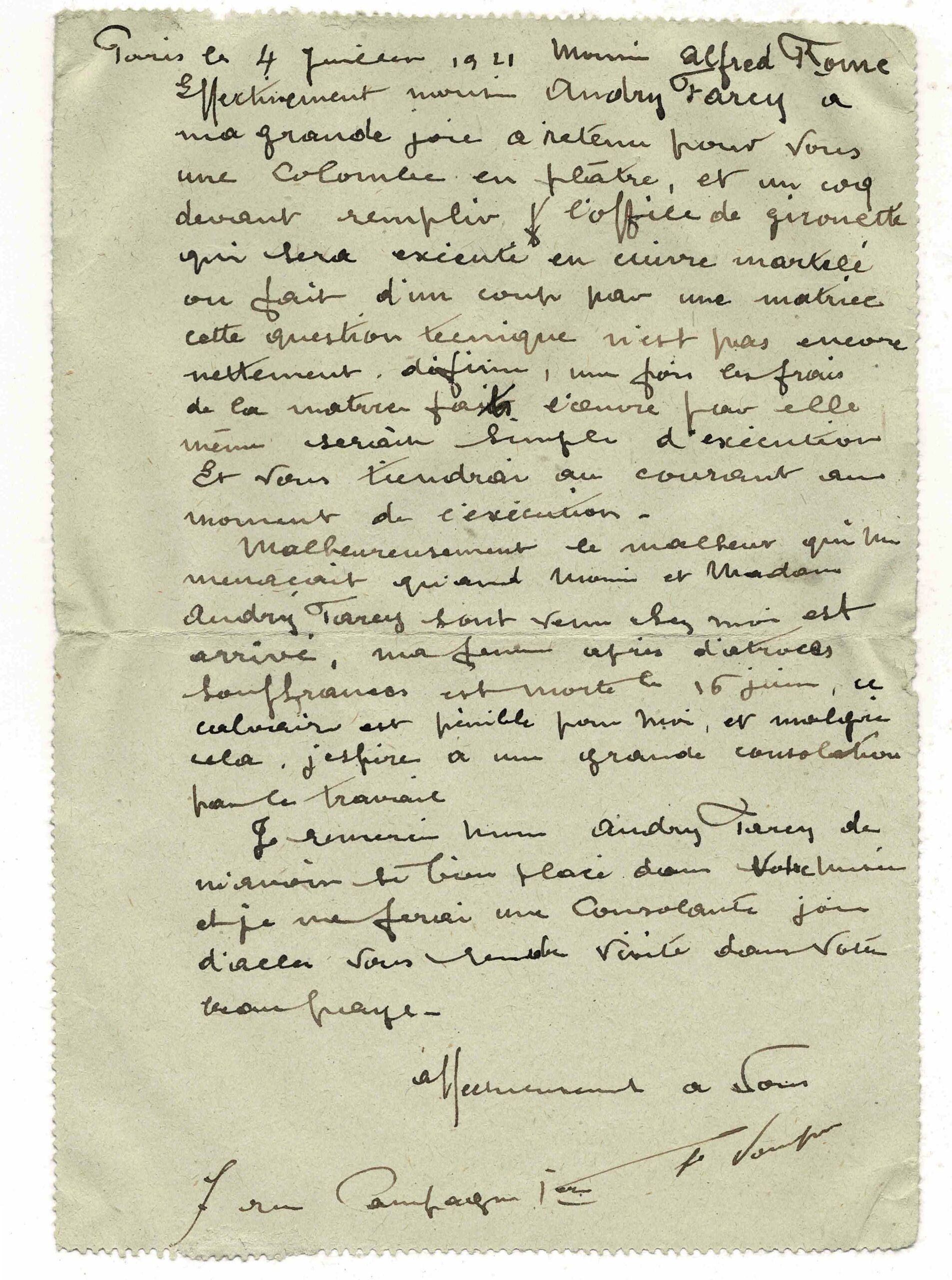François Pompon (1855.1933)
Autograph letter signed to the architect Alfred Rome.
An in-12 ° page on paper with serrated edges.
Autograph address and postmarks.
Paris. July 4, 1921.
"This ordeal is painful for me, and despite this, I hope for a great consolation through work. »
Ajected by the death of his wife, the French sculptor nevertheless is delighted to see two of his works - a dove and a Girouette rooster - retained to enter the collections of the Grenoble Museum.
________________________________________________
“Mr. Alfred Rome. Indeed, Mr. Andry Farcy to my great joy held a plaster dove for you, and a rooster in front of filling the weather vane which will be executed in hammered copper or suddenly made by a matrix. This technical question is not yet clearly defined. Once the matrix was made, the work by herself would be simple to execute. And will keep you posted at the time of execution.
Unfortunately the misfortune that threatened me when Mr. and Mrs. Andry Farcy came to my house, my wife after excruciating suffering died on June 16. This ordeal is painful for me, and despite this, I hope for a great consolation through work .
I thank Mr. Andry Farcy for having placed me so well in your museum and I will be a consoling joy to visit you in your beautiful country. Affectionately to you. F. Pompon. »»
________________________________________________
Pierre-André Farcy dit Andry-Farcy (1882.1950) moved to Grenoble in 1907. In 1910 he was hired as an advertising designer then as an art critic by the little Dauphinois . Before and during the First World War, he collaborated with two Grenoble magazines, ephemeral but important, the Cimaise in the three roses . Appointed to the management of the Grenoble museum in 1919, Andry-Farcy managed to hoist him to the rank of the first museum of modern art in France, from the beginning of the 1920s. He also knew how to use the formidable communication tool that was the little Dauphinois , the main local newspaper, to inform readers of everything he achieved in the museum. Finally, thanks to his privileged relationships with the art world and in particular with the artists, he obtained many gifts which he immediately hung on the picture rails. He continued his action until the end of his career in 1949, the year he brought in the young Pierre Soulages into the Grenoble collections. If today the Grenoble museum is one of the major European museums, it owes it largely to Andry-Farcy who, thanks to his tenacity and his charisma, succeeds in imposing the art of his time.
It was probably through Andry-Farcy that Pompon and Alfred Rome met. After studying at the School of Fine Arts, Rome was appointed regional architect of Historic Monuments of Isère. Inflected collector, Rome evolved with ease among the influential and art -passionate personalities of the region, linked in particular to friendship with Andry Farcy, who constituted the Musée de Grenoble the first collection of modern art in France. He declared: "My projects are clear: continue to oppose the decisions of my predecessors. I open the doors to young people, to those who are illustrated in an unprecedented style. These are the guidelines that will allow me to create the first truly modern museum in France. It was as a result of these progressive attitudes that Farcy and Rome were attracted by the work of François Pompon, including three works - the duck, the vulture and the brown bear - were going to enter the museum's collections.
It therefore seems that the two works mentioned in this letter by Pompon were not finally retained by the museum.



